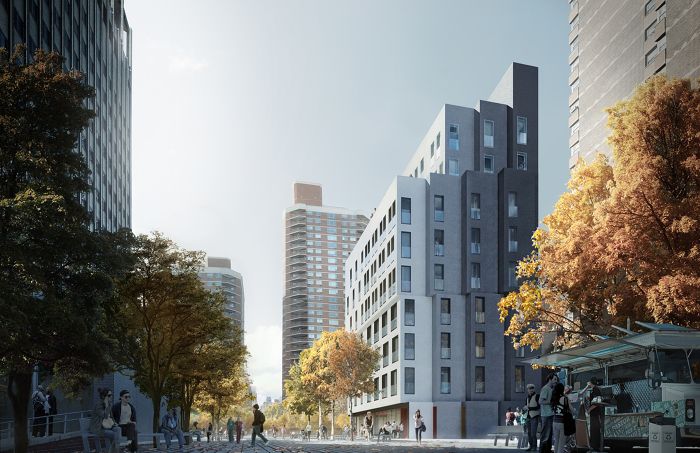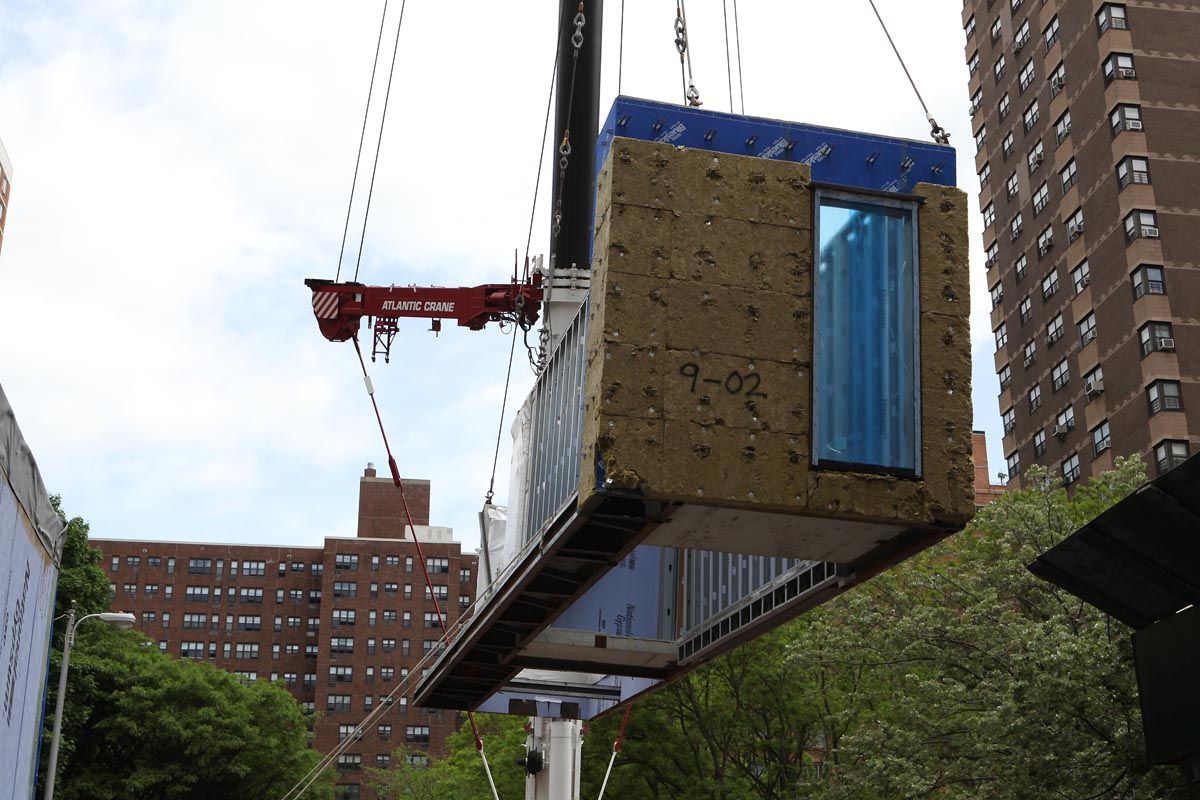
Apartments as small as 260 sq. ft. might seem like a joke to some prospective renters, but in New York City 60,000 people submitted applications for 14 affordable studios in New York City’s first “micro-unit” apartment building.
Carmel Place, The New York Times reports, will open in February with 55 studio apartments ranging in size from 260 to 360 sq. ft.
Those 60,000 applicants (about 4300 per apartment) were reduced to 14 in a lottery. Leasing for other apartments in the building is now underway.
Affordable apartments in the building will go for $950 per month, but others will be much more expensive–up to $2910 for a furnished, 355-sq.-ft. apartment on the second floor. The cheapest market-rate furnished apartment in the building is a 265-sq.-ft. unit on the third floor going for $2540 a month.
So it’s not micro-rents that are attracting tenants, but the prospect of not having to share a small apartment with one or more roommates. And that appears to be a huge unmet need. Most of the city’s housing stock is designed for families, The Times says, but 40% of the households in the city aren’t families and studio apartments (those with one main room) account for only 7% of the existing housing stock.
Design competition launched the project
Carmel Place, originally called My Micro NY, is being developed by Monadnock Development with the Lower East Side People’s Mutual Housing Association. It is the result of a 2012 design competition aimed at encouraging safe, legal and reasonably priced apartments for residents who aren’t interested in sharing their digs with other people, The Times said.
Apartments less than 400 square feet became illegal after 1987 zoning restrictions were imposed, but the city waived the requirement and allowed Carmel Place to move ahead. There are an estimated 3000 apartments in Manhattan less than the 400-sq.-ft. minimum now on the books, grandfathered under the zoning change. The average studio apartment in Manhattan isn’t much bigger–just 550 sq. ft.–and comes with a median rent of $2555 a month.
“There is this idea that bigger is better, and that we need housing for families,” Sarah Watson, the deputy director of the Citizens Housing and Planning Council, told the newspaper. “But people change, lifestyle changes, technology changes and the housing needs to change.”
The modular units were built at the Brooklyn Naval Yard, trucked to the site and assembled into a building. (The newspaper published a slide show documenting the construction process earlier in the year.)
Designers used a variety of techniques to make the apartments seem bigger and to conserve space. Ceilings, for example, are more than 9 feet tall, and sliding glass doors open to small balconies, bringing in light and air. Kitchenettes have mini-refrigerators, two-burner electric cooktops and microwaves (but not ovens). Features such as pull-down beds, and desks that can be extended into dining tables seating as many as 10 people, also help to make the most out of small footprints.
The building also has common spaces, including a gym, two lounges, an outdoor courtyard, and a roof deck with a barbecue. Housekeeping services are available.
Christopher Bledsoe, a founding partner of Stage 3 Properties, said the market already has determined square footage is only one factor renters weigh. Other features, such as housekeeping and free Wi-Fi, can convince some people to pay more for less room.
Fine Homebuilding Recommended Products
Fine Homebuilding receives a commission for items purchased through links on this site, including Amazon Associates and other affiliate advertising programs.

Reliable Crimp Connectors

8067 All-Weather Flashing Tape

Affordable IR Camera


























